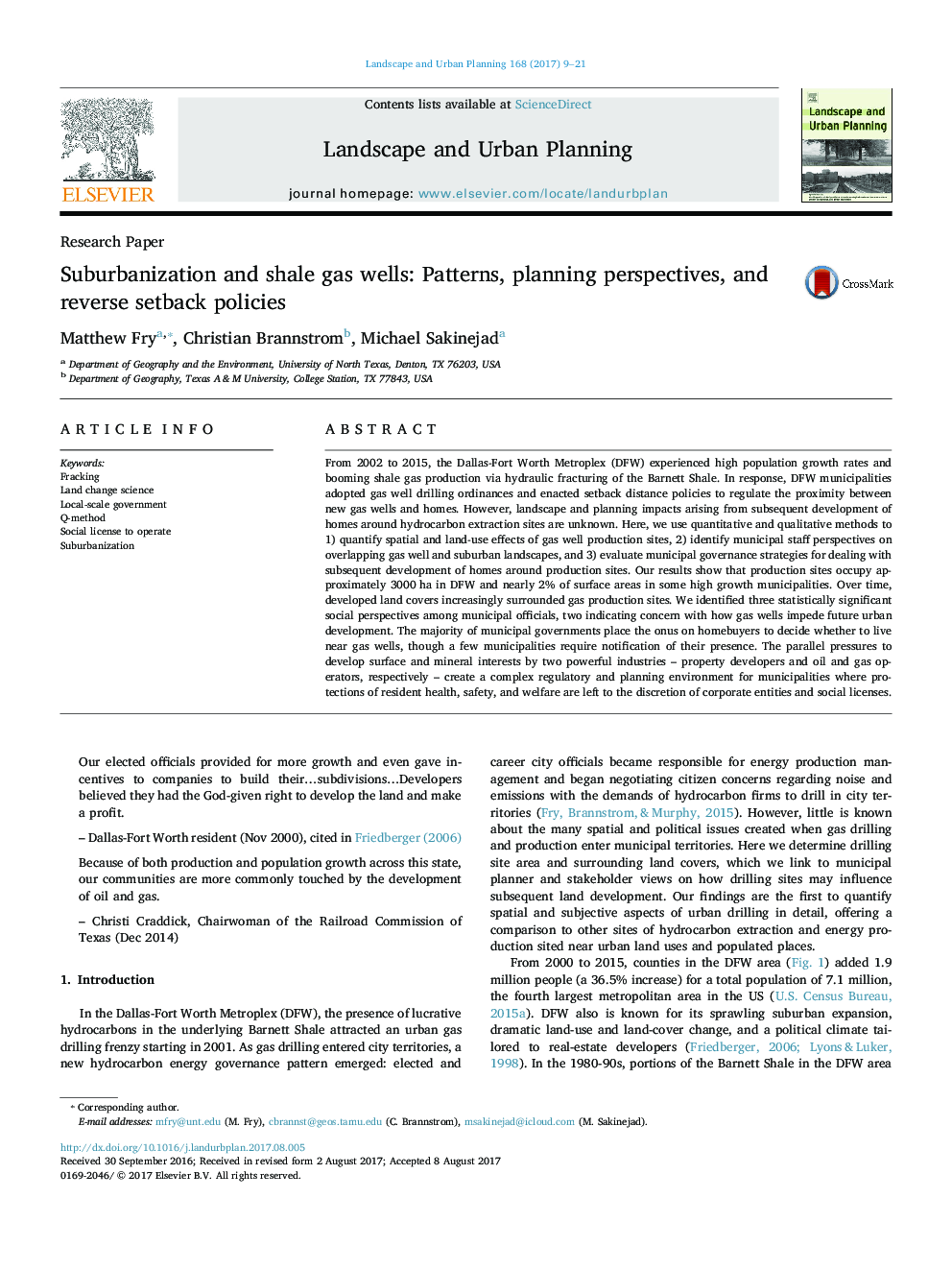| Article ID | Journal | Published Year | Pages | File Type |
|---|---|---|---|---|
| 7460173 | Landscape and Urban Planning | 2017 | 13 Pages |
Abstract
From 2002 to 2015, the Dallas-Fort Worth Metroplex (DFW) experienced high population growth rates and booming shale gas production via hydraulic fracturing of the Barnett Shale. In response, DFW municipalities adopted gas well drilling ordinances and enacted setback distance policies to regulate the proximity between new gas wells and homes. However, landscape and planning impacts arising from subsequent development of homes around hydrocarbon extraction sites are unknown. Here, we use quantitative and qualitative methods to 1) quantify spatial and land-use effects of gas well production sites, 2) identify municipal staff perspectives on overlapping gas well and suburban landscapes, and 3) evaluate municipal governance strategies for dealing with subsequent development of homes around production sites. Our results show that production sites occupy approximately 3000Â ha in DFW and nearly 2% of surface areas in some high growth municipalities. Over time, developed land covers increasingly surrounded gas production sites. We identified three statistically significant social perspectives among municipal officials, two indicating concern with how gas wells impede future urban development. The majority of municipal governments place the onus on homebuyers to decide whether to live near gas wells, though a few municipalities require notification of their presence. The parallel pressures to develop surface and mineral interests by two powerful industries - property developers and oil and gas operators, respectively - create a complex regulatory and planning environment for municipalities where protections of resident health, safety, and welfare are left to the discretion of corporate entities and social licenses.
Related Topics
Life Sciences
Agricultural and Biological Sciences
Ecology, Evolution, Behavior and Systematics
Authors
Matthew Fry, Christian Brannstrom, Michael Sakinejad,
